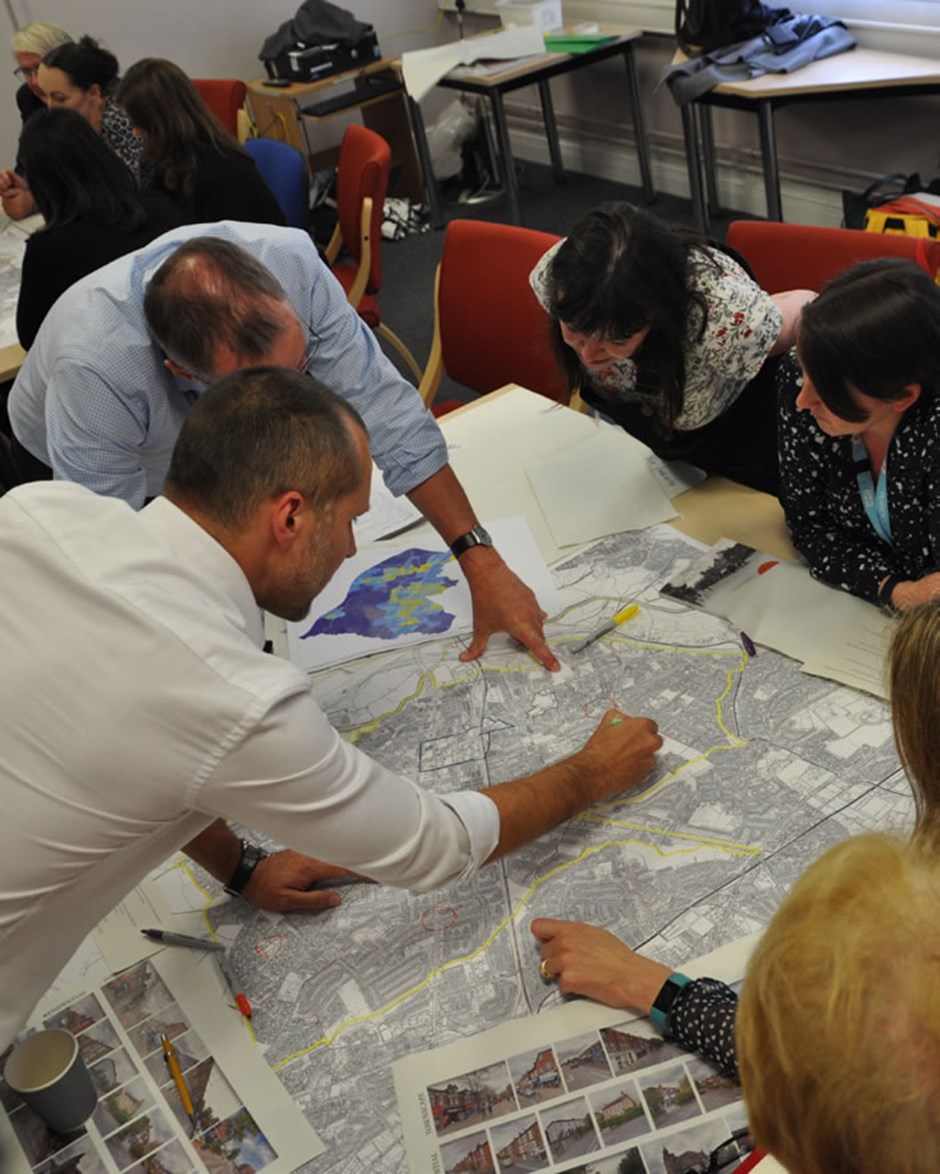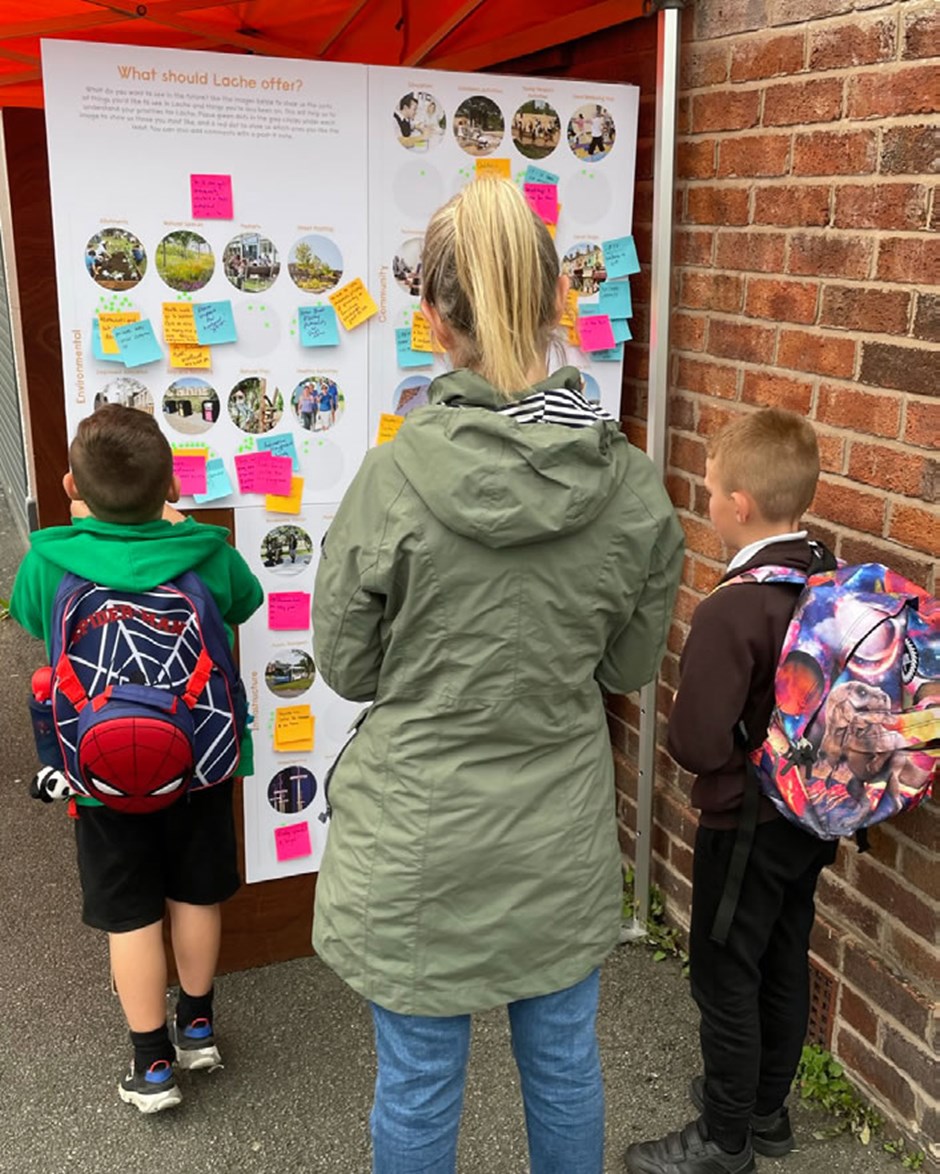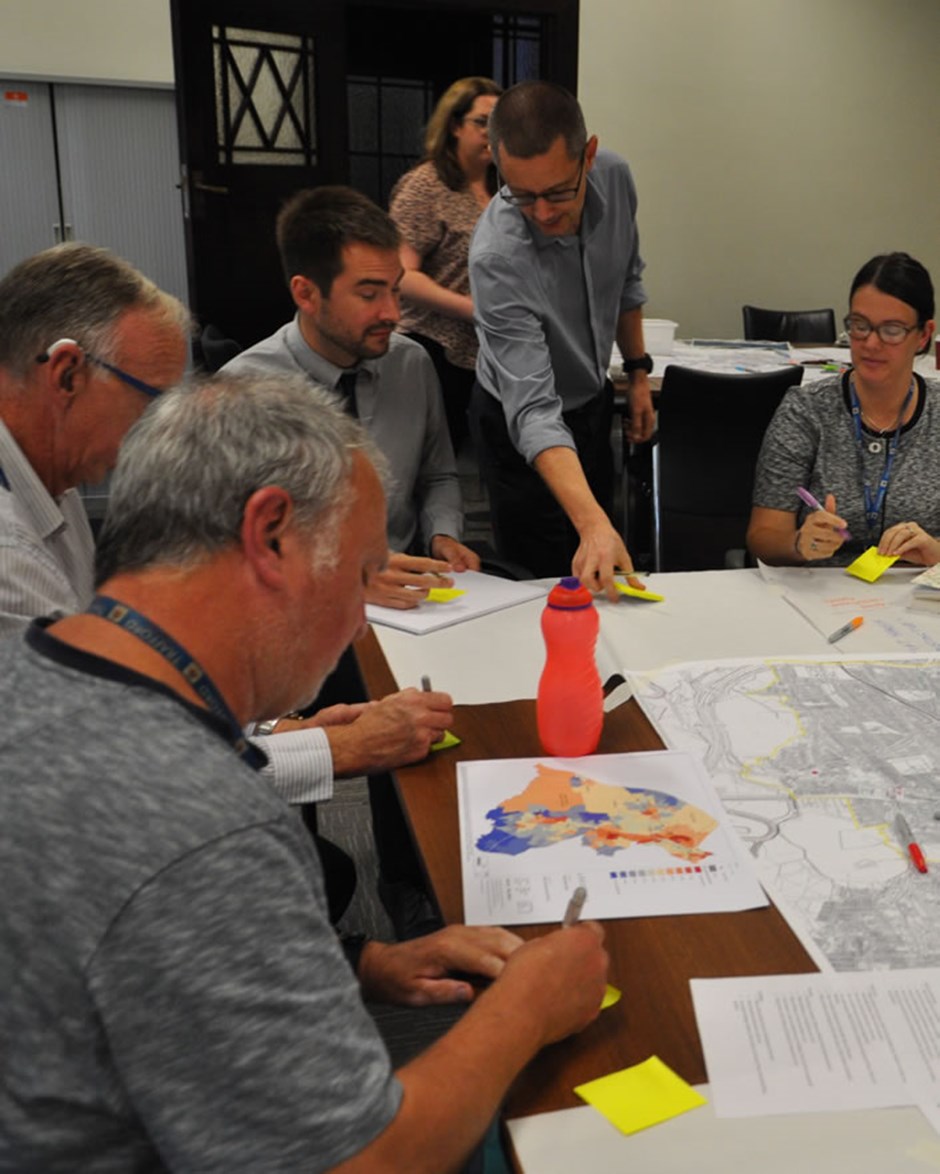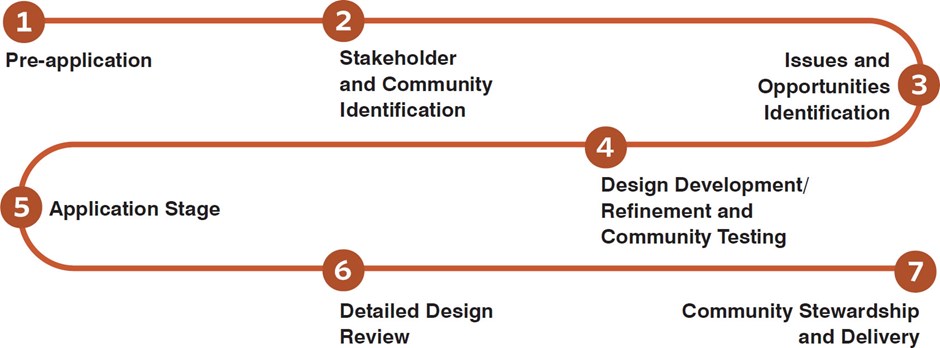Delivering Design Excellence
The National Model Design Code states the importance of design codes in providing a framework for sustainable, high quality design and placemaking. “Design codes are important because they provide a framework for creating healthy, safe, green, environmentally responsive, sustainable and distinctive places, with a consistent and highquality standard of design.” In addition, the NPPF clearly states that applications that fail to take the opportunities available for improving the character and quality of an area and the way it functions, should be refused. Therefore, good design is a fundamental and integral part of the development process and must be considered from the outset to ensure a positive outcome. In order for this to be achieved a rigorous design process should be implemented and followed.
The following section sets out the key considerations for successfully applying this code.
Implementing the Code
This Design Code will form a material consideration for planning applications across Uttlesford. Applicants are required to follow the rules and principles outlined in the Code to;
- show a full appreciation of the design context;
- clearly illustrate how they have responded to the character and identity of the built and public realm outlined within Uttlesford Places and how this is reflected in their proposals;
- outline how their design proposal has adhered to the requirements of the code and the National Design guide themes;
- outline (where appropriate) how proposals relate to and have considered and implemented the Development Scale Coding requirements
As well as a tool for making planning decisions, the code will be used to inform and frame pre-application discussions. Applicant’s are required to frame their pre-application submissions around the themes of the Design Code / National Design Guide.
Viability
There may be occasions where the rules and principles set out in this code impact upon the viability and deliverability of a development. In such circumstances, in accordance with paragraph 57 of the NPPF, there may be an opportunity for an applicant to argue a case for non-compliance on the individual viability of a scheme, but only when an open book approach to the viability appraisal is adopted.
Post application and conditions
When development proposals are granted planning permission, The Council will use appropriate conditions to ensure that the design quality of development is achieved.
For outline proposals, the Council will seek to agree certain development “fixes” which may take the form of a development framework, masterplan or for a site specific design code to support the application. Dependant on the scale and complexity of development a layered approach may be required - for example a site wide design code accompanying an application and subsequent detailed design codes required by condition.
In this context, a condition will require subsequent reserved matters applications to relate to key masterplan design principles, parameter drawings and design codes to ensure that control over the design quality of reserved matters applications is retained.
For detailed applications, conditions will require further details to ensure a quality outcome on specific aspects, including materials and landscape specifications.
Value engineering and quality in delivery
Value engineering is important in ensuring appropriate feasibility and best value is achieved for elements of the design proposals. Value engineering, however, should not be a process which compromises the eventual design quality of the outcome. The Council will resist subsequent applications for minor amendments or to vary extant permissions or conditions that are likely to impact on the quality of the architecture or public realm set out at the application stage.
Design Review and Social Value
The design review process is a well established way of improving the quality of design of development and is advocated by the NPPF and National Design Guide. It essentially involves reviewing scheme proposals with an independent, multidisciplinary panel of built environment experts. Schemes can be reviewed at all stages of the planning application process, although a review at the concept stage often helps to add more value to the design.
At present applications within Uttlesford are referred to the Essex Quality Review Panel. Using this code as a basis, Uttlesford District Council propose establish a design review panel as a sub-panel of the Essex Quality Review Panel This panel will be made up of local stakeholders, members and design experts and will be responsible for reviewing the design quality of design proposals within the district. Details of the design review panel will be detailed separately on the Council’s website and attendance will be agreed with the Council during the preapplication stage.
All schemes above 50 homes or 1,000sqm of floorspace will be referred to the Uttlesford Review Panel. Smaller applications which have a sensitive context, or are non-compliant with current policy will also be referred to the panel.
Whilst reviewing design quality, Uttlesford encourages a review of social value. This should consider the social impact of the development; including skills, learning, job creation, access to amenity, inclusive use and other key indicators. Developers are encouraged to clearly outline the social value of their design.
Engagement through the Planning Process
Uttlesford has an engaged and passionate network of communities and Uttlesford District Council is committed to giving communities and stakeholders a say in shaping its future growth and design. The development of this Design Code has been informed through extensive engagement, both through the emerging Local Plan and specific engagement focussed around what communities would like to see future developments within the district look like.
The design and development of every new place will affect most people directly, as well as others indirectly. Meaningful engagement should form part of the design process. Engagement should not be seen as a final hurdle before application, it should instead be seen as a vital tool in the creation of the best possible design outcome.
1. Pre-application discussions with The Council
It is important to engage council planning officers at the outset and at key project milestones throughout any project. These discussions can confirm whether the principle of development is acceptable and provide clarity on the format, type and level of detail required to enable an application to be determined. The pre-application discussions should ultimately lead to a more efficient process and desirable design solution. As outlined, the Code should frame these discussions.
2. Community consultation and codesign:
Applicants will always be encouraged to consider the benefits of involving the community in developing their proposals. Applicants and designers should take responsibility for communicating with those who may be affected, engagement should be inclusive and consider innovative ways of engaging traditionally hard to reach groups to make sure that they are informed about the project and, where possible, have the opportunity to contribute to shaping the development.
Rather than simply informing communities of design development, designers and applicants should engage communities in the design process to help shape their proposals and gather local “buy-in” from the outset.
Suggested engagement methods include the use of questionnaires and surveys, public exhibitions or meetings, design workshops with community groups and other stakeholders (including access groups), websites and site notices.
Consultation must, naturally, be commensurate to the scale of a project. For example, smaller developments that are unlikely to impact a large number of people significantly will be expected to deliver proportional engagement on design development and testing.
Larger development proposals, however, will be expected to engage fully with communities to shape and test ideas. For larger scale proposals (see Section 5 Development Scale Coding), the Council will require as a minimum encourage a two stage public consultation process – both at the concept and more detailed design stages.
The design process will be greatly enhanced through the engagement of harder to reach groups, such as less able bodied or ethnic minorities, and applicants are encouraged to actively engage with all groups.
What you should consider
Designing Together
- Undertake pre-application discussions with the LPA at concept stage.
- Applicants should assess the extent of consultation required at the outset and put a responsive engagement plan in place
- Where feasible, applicants should establish a project brief that is fully informed by local communities
- Early engagement should seek to identify key issues and opportunities, and future stewardship.
- Engage communities and stakeholders throughout the design process.
- Improve certainty by engaging communities and stakeholders by establishing touchpoints throughout the design process.
- Keep engagement simple and well-informed
Page updated: 20/07/2023



